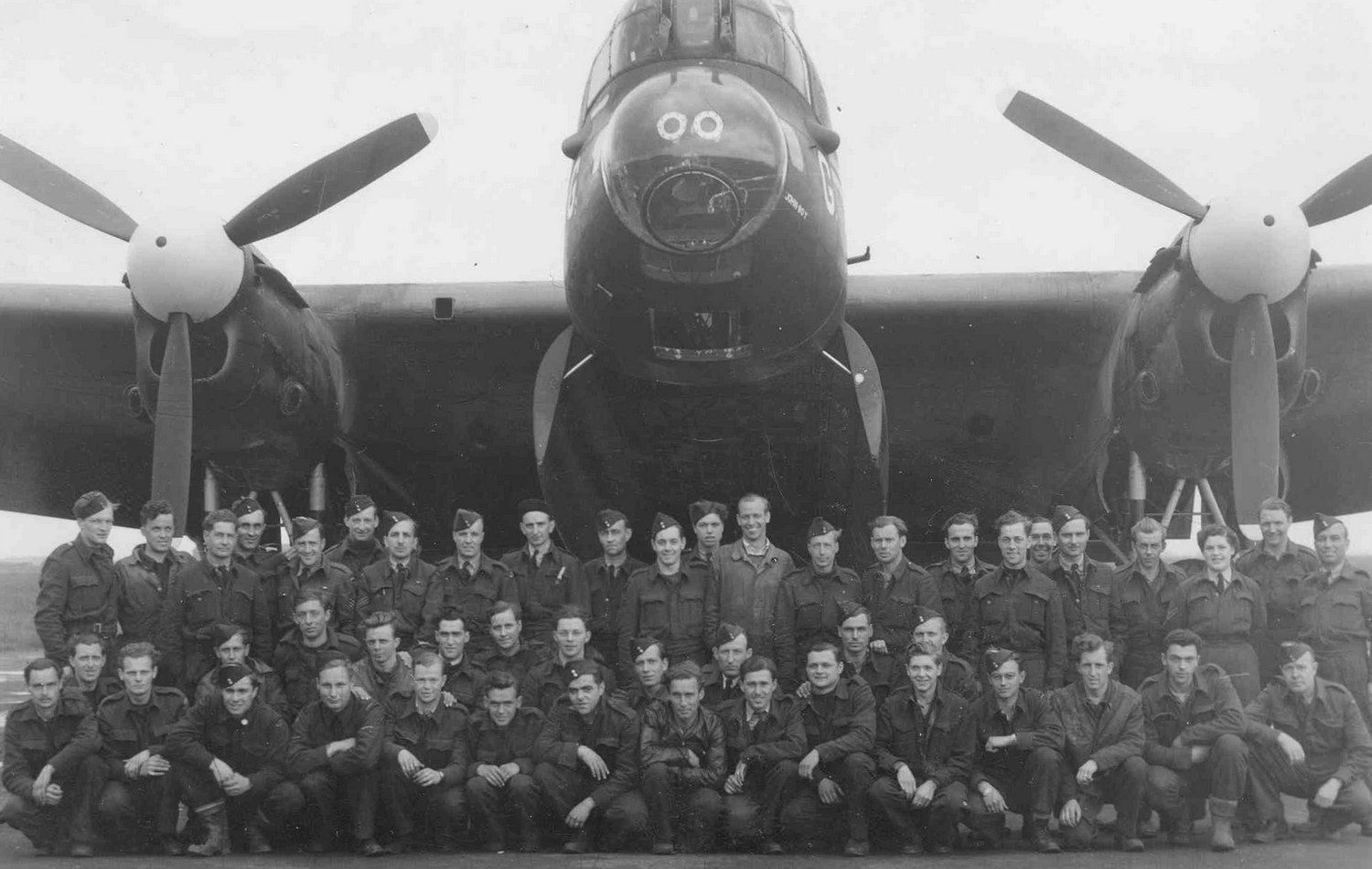
420 Squadron "Snowy Owl" a Canadian Bomber Squadron that flew from the Midlands in Britain to attack Nazi held positions in Europe
The RAF (Royal Air Force - Britain) and the RCAF (Royal Canadian Air Force - Canada) were divided into different Commands:
- Fighter Command - RAF Fighter Command was one of the commands of the Royal Air Force. It was formed in 1936 to allow more specialized control of fighter aircraft. It served throughout the Second World War. It earned near-immortal fame during the Battle of Britain in 1940, when the Few held off the Luftwaffe attack on Britain. Wikipedia Examples of Fighter Command Airmen are Claude Weaver III, an American Airman who joined the RCAF. Claude Weaver represents one of over 8000 Americans who joined the RCAF, because the USA was remaining neutral. Many Americans thought that the Nazi regime needed to be stopped and enlisted in foreign military service. The RCAF was open and accepting of Americans.
- Bomber Command - RAF Bomber Command controlled the Royal Air Force's bomber forces from 1936 to 1968. Along with the United States Army Air Forces, it played the central role in the strategic bombing of Germany in World War II. From 1942 onward, the British bombing campaign against Germany became less restrictive and increasingly targeted industrial sites and the civilian manpower base essential for German war production. In total 364,514 operational sorties were flown, 1,030,500 tons of bombs were dropped and 8,325 aircraft lost in action. Bomber Command crews also suffered a high casualty rate: 55,573 were killed out of a total of 125,000 aircrew, a 44.4% death rate. A further 8,403 men were wounded in action, and 9,838 became prisoners of war. Wikipedia Robert Allan Anderson is an excellent example of an ordinary young man from Brandon Manitoba, whose war history is told here. Study his career and answer the questions below. Anderson represents almost all aspects of the war: recruitment, training, operational deployment, prisoner of war then return home.
- Coastal Command - RAF Coastal Command was a formation within the Royal Air Force (RAF). It was founded in 1936, when the RAF was restructured into Fighter, Bomber and Coastal Commands and played an important role during the Second World War. Maritime Aviation had been neglected in the inter-war period, due to disagreements between the Royal Navy (RN) and RAF over the ownership, roles and investment in maritime air power.Wikipedia
- Transport Command - RAF Transport Command was a Royal Air Force command that controlled all transport aircraft of the RAF. It was established on 25 March 1943 by the renaming of the RAF Ferry Command, and was subsequently renamed RAF Air Support Command in 1967. Wikipedia Transport Command was responsible for moving men and materials to operational locations throughout the world.
- Temporary Operations during War Time
- Ferry Command - RAF Ferry Command was the secretive Royal Air Force command formed on 20 July 1941 to ferry urgently needed aircraft from their place of manufacture in the United States and Canada, to the front line operational units in Britain, Europe, North Africa and the Middle East during the Second World War. It was later subsumed into the new Transport Command on 25 March 1943 by being reduced to Group status. Wikipedia Ferry Command was operated from Dorval Airport in Montreal by the Canadian Pacific Railway Company.
- British Commonwealth Air Training Plan - (1939-1945) The British Commonwealth Air Training Plan (BCATP), or Empire Air Training Scheme (EATS) often referred to as simply "The Plan", was a massive, joint military aircrew training program created by the United Kingdom, Canada, Australia and New Zealand, during the Second World War. BCATP remains as one of the single largest aviation training programs in history and was responsible for training nearly half the pilots, navigators, bomb aimers, air gunners, wireless operators and flight engineers who served with the Royal Air Force (RAF), Royal Navy Fleet Air Arm (FAA), Royal Australian Air Force (RAAF), Royal Canadian Air Force (RCAF) and Royal New Zealand Air Force (RNZAF) during the war. Canada trained over 131,000 airmen and over 80,00 ground crew. Wikipedia
Assignment
- Robert Allan Anderson - Review the entire story of a Canadian Airman from Brandon Manitoba. The story encompasses enlistment to his return home.
- Frederick Manual Mifflin - A Newfoundlander (not in Canada until 1949) was a pilot on a Lancaster Bomber. An engine caught fire and the Navigator, Norman Cyril Jackson, VC actually went out on the wing during flight to extinguish the blaze.
- Answer the 7 sets of Anderson questions below. You can click and link directly to the Anderson file.
- Claude Weaver III is an excellent true story about an exceptional American Fighter Pilot who joined the RCAF before the USA joined the war (USA joined after the attack on Pearl Harbor December 7, 1941).


